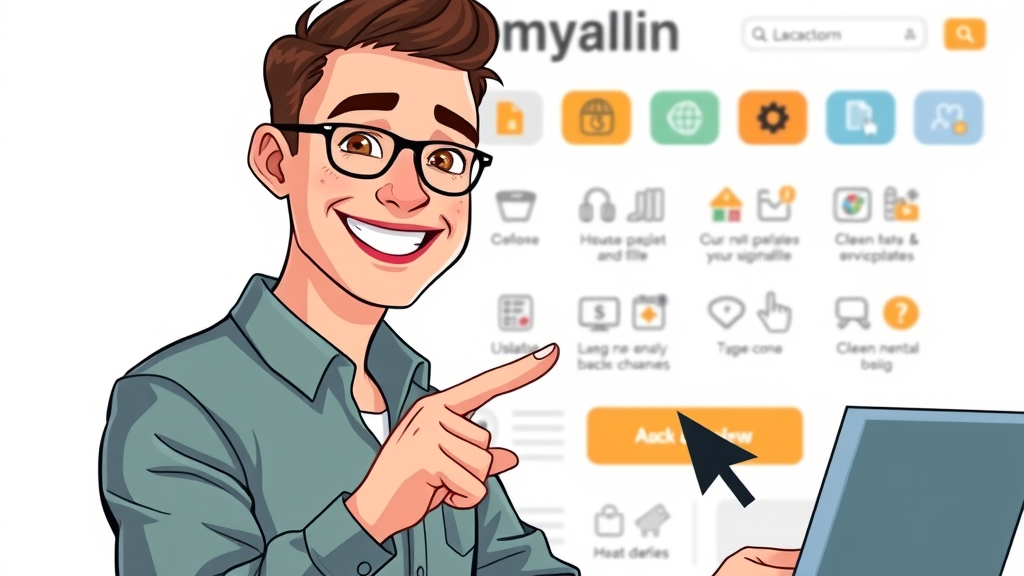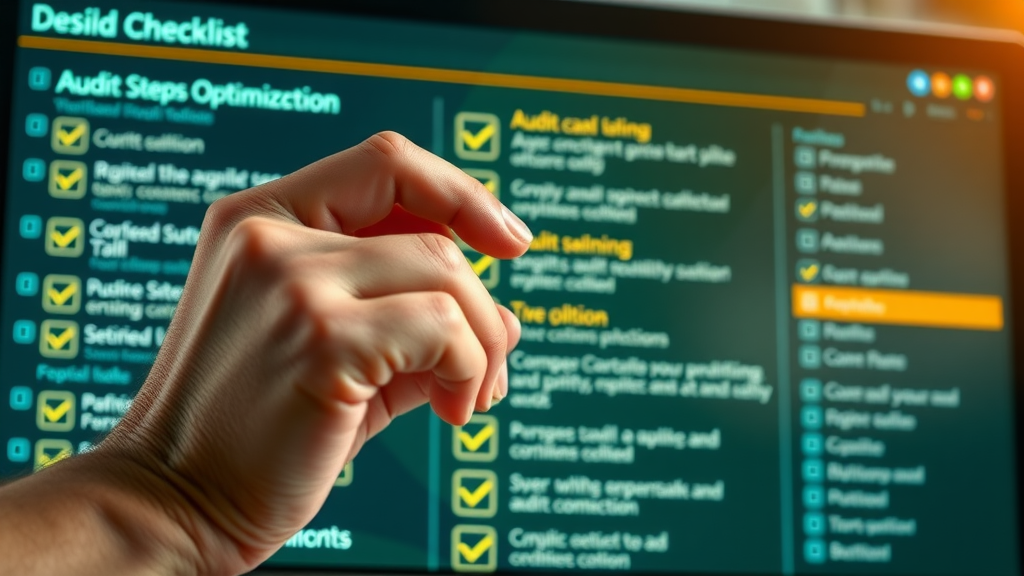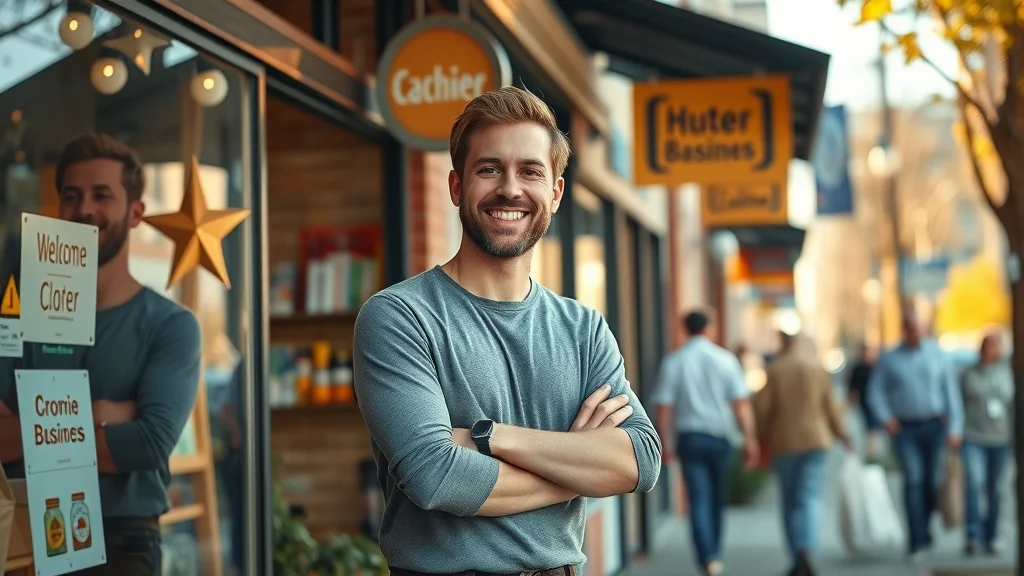
Did you know the average website conversion rate is just 2.35%? That means for every 100 visitors, only two or three will complete your desired action. Yet, the highest-performing websites convert at 5.31% or higher! The difference isn’t massive overhauls—it’s often just a handful of strategic, rapid tweaks. In this comprehensive guide, you’ll uncover actionable steps and surprising insights to boost your website conversion instantly and over the long term. Whether you run an e-commerce store or a service-based site, these tips make every click count.
Unlocking the Power of Website Conversion: Surprising Insights That Can Transform Your Results
- Did you know that the average website conversion rate across all industries is only 2.35%? Yet, top-performing sites achieve 5.31% or higher. You can belong to that elite group by making a few strategic tweaks.
Website conversion isn’t just about traffic—it's about turning a higher percentage of your current site visitors into loyal subscribers, buyers, or leads. In today's digital landscape, gaining more visitors gets expensive, fast. But what if, instead, you could simply convert more of those you already have? The result is a higher conversion rate , meaning greater revenue, more customers, and less wasted marketing spend. Companies focused on rate optimization don’t just grow—they grow efficiently, leaving competitors wondering what happened.
In this section, we’ll reveal several lesser-known tweaks—backed by industry data and conversion optimization best practices—that can transform low conversion rates into industry-leading results. These practical insights apply to any web page—from product pages to landing pages —and can deliver tangible wins in days, not months.
Essential Concepts: Understanding Website Conversion and Conversion Rates
What is Website Conversion?
At its core, a website conversion is when a website visitor completes your most important desired action . This action could be anything from making a purchase and filling out a lead form, to subscribing to an email list or downloading a guide. It’s the moment your website’s purpose has been fulfilled—your visitor has crossed the finish line you designed for them. In many cases, a well-optimized conversion goal aligns tightly with business growth, such as gaining a new customer or a qualified lead.
Even small increases in site conversion can translate to big wins: more sales, more leads, or more sign-ups, often without an increase in traffic. That’s why focusing on conversion optimization is one of the most powerful and cost-effective ways to grow your business.
Why Do Website Conversion Rates Matter?
Your website conversion rate measures the proportion of site visitors who actually take your intended action. Out of 1,000 people who see your landing page , if only 20 convert, your rate is 2%. For most businesses, conversion rates are the single most important KPI. Why? Because increasing your conversion rate means getting more value from every marketing dollar you spend—beating your competition without spending more on ads or traffic.
Targeting your conversion rate means targeting growth. It impacts how many people ultimately become customers, how efficiently your marketing budget is used, and how quickly your business can scale.

The Connection Between Conversion Rate Optimization and Website Success
Conversion rate optimization (CRO) is the science and art of improving your site conversion rate . By understanding user behavior and adjusting your landing pages , content, and design, CRO ensures you maximize the number of conversions from every website visitor . For online businesses—especially in e-commerce—ongoing CRO amplifies every marketing effort, multiplying the impact of your product page tweaks, social media, and paid campaigns.
Ultimately, rate optimization equals more efficient growth. Instead of chasing new traffic, which can be costly, savvy businesses focus on getting more from existing visitors. This approach is what separates average performers from the industry leaders.
Quick Fixes for Immediate Website Conversion Rate Optimization
Optimize Landing Pages for Maximum Website Conversion
Your landing page is often the first impression a visitor gets—and it's your best chance to guide them toward a conversion goal . Highly focused landing pages that match your target audience’s needs can lift your site conversion rate dramatically. Make sure each landing page speaks directly to your visitor, addresses objections, and features a single, clear call to action. Remove distractions, simplify content, and use persuasive language to keep visitors moving forward.
Consistency in messaging between your ad/social post and landing page will further enhance trust and boost conversion rates . Visual comfort and mobile-friendliness also elevate the user experience , making it more likely for every website visitor to complete the journey you designed.
Reduce Web Page Load Time for Improved Site Conversion Rate
Slow web page load time is a conversion killer. Just a single second delay can drop your conversion rate by up to 7%. Whether it’s oversized images or unoptimized scripts, improving load time means less friction and fewer bounces. Audit your site with tools like Google PageSpeed Insights or GTmetrix, and prioritize fixes for pages that see high drop-off rates.
Optimize images, implement browser caching, and streamline code on your landing and product pages . A faster site doesn’t just mean better rankings—it means more visitors completing your forms, purchases, and other desired actions .
Simplify Navigation to Boost Commerce Conversion Rate
If users can’t find what they need in seconds, your commerce conversion rate will suffer. Simple, intuitive navigation leads to a better user experience , while complicated menus create confusion and low conversion . Make sure your main categories are easily visible, logical, and not cluttered with too many options. Every extra click reduces the chance a visitor will convert.
Adding a clear search bar, eliminating redundant links, and using breadcrumbs helps guide both new and returning visitors. Revisit your navigation regularly, especially if your site grows, to ensure all changes are focused on the end goal—a smooth path to conversion.

Craft Persuasive Calls to Action: Turning Website Visitors into Conversions
Every page needs a bold, visible, and action-oriented call to action (CTA). The difference between “Submit” and “Get My Free Quote” is huge when it comes to conversion rates . Use color contrasts, strong verbs, and design treatments that make your CTA impossible to miss. Be clear about what happens next—set expectations, reduce anxiety, and make the value obvious.
Test different CTA placements and keep language personal—for example, “Start My Free Trial” outperforms bland or generic text. CTAs should appear above the fold and at logical breakpoints throughout content. The right CTA strategy can sharply increase your site conversion , especially on landing pages and product pages .
Test and Tweak: The Power of A/B Testing in Rate Optimization
Guesswork and gut feelings have their limits. Conversion rate optimization only works when fueled by data. That’s why A/B testing—showing alternative versions of a web page to live visitors and comparing outcomes—is crucial. Experiment with headlines, images, button colors, or even different page layouts. Every test builds knowledge, showing exactly what prompts a website visitor to act.
Prioritize A/B tests on high-traffic, high-impact pages to quickly elevate your website conversion rate . Remember: what works for one business may not work for another, so continuous testing is key for ongoing improvement.
Analyzing Your Website Conversion Rate: Key Metrics and Benchmarks
| Industry | Average Conversion Rate | Top 25% Conversion Rate |
|---|---|---|
| E-commerce | 2.0% | 5.3% |
| Lead Generation | 2.6% | 6.5% |
| B2B Services | 2.4% | 6.0% |
| Finance | 5.1% | 10.0% |
| SaaS | 3.0% | 7.5% |
How to Calculate Your Website Conversion Rate
Calculating your website conversion rate is straightforward: divide the number of conversions by the number of visitors, then multiply by 100. For example, 50 conversions from 2,000 visitors equals a rate of 2.5%. This simple formula allows you to compare how different pages, channels, or offers are performing. Remember: always define what a “conversion” means for each web page —it could be a sale, a form submission, or any other desired action .
Tracking your average conversion rate over time helps identify what’s working and what needs to improve. Segment results by new vs. returning users, device, source, or campaign for even more actionable insights.

Metrics That Matter: Tracking Site Conversion Performance
Beyond the basic conversion rate , keep an eye on supporting metrics: bounce rate, average time on page, abandonment rate (for checkouts), and micro-conversions like button clicks or video plays. Each offers clues into where site visitors get stuck or what persuades them to move forward.
Continually monitoring these indicators helps diagnose underperforming pages and discover untapped opportunities—providing a foundation for the most effective conversion rate optimization programs.
Enhancing Ecommerce Conversion Rates: Proven Strategies
Personalization: Connecting with Your Website Visitors and Site Visitors
The fastest-growing e-commerce brands personalize the shopping experience for every website visitor . By showing targeted recommendations, special offers, or greeting by name, you dramatically increase the odds of a sale. Even simple tweaks—like displaying bestsellers based on browsing history—can elevate your ecommerce conversion rate .
Personalization boosts site conversion because it makes shoppers feel seen. The more relevant your site feels, the higher the chance your visitors will complete a desired action —like adding products to cart or signing up for your newsletter.

Building Trust: The Role of Security Badges and Social Proof in Website Conversion
Trust is a critical part of every conversion journey. Display security badges, customer reviews, and clear refund policies to remove anxiety. If a website visitor senses safety and credibility, they’re much more likely to convert—especially on ecommerce conversion landing pages or product pages .
Featuring testimonials, star ratings, or the logos of payment providers and security partners are easy ways to ease fears. User-generated content and authentic reviews not only increase conversion rates but also build long-term brand loyalty.
Optimizing Mobile Experience for Higher Ecommerce Conversion Rate
With over half of web traffic now from mobile, a poor mobile experience can ruin your commerce conversion rate . Ensure your site loads quickly, menus are touch-friendly, and checkout is seamless on every device. Use large, thumb-friendly buttons and auto-fill for forms to simplify the process.
Responsive design, fast mobile load time , and mobile-optimized landing pages will keep your website conversion rate high—even as user habits continue to shift toward mobile-first browsing.

Landing Page Optimization: Techniques to Drive Higher Site Conversion Rate
Creating Engaging Landing Pages That Improve Conversion Rates
An effective landing page serves a single goal: guiding the visitor to a desired conversion action with no distractions. Use eye-catching headlines, clear value propositions, trust markers, and concise forms. Each element on your landing page should answer “What’s in it for me?” from the visitor’s perspective.
For a higher site conversion rate , eliminate anything that might cause confusion or hesitation. Minimal navigation, focused messaging, and prominent CTAs turn more visitors into customers with every visit.
Utilize Multimedia: Video and Visuals That Enhance Website Conversion
Videos, infographics, and engaging imagery can humanize your brand and break down complex topics quickly. Videos that show your product in action, customer testimonials, or quick “how it works” demos improve both dwell time and conversion rates . Visuals reinforce your message, build trust, and keep visitors engaged longer.
On landing pages , pick multimedia that enhances (not distracts from) your core goal. Short, high-quality clips and relevant graphics are proven to increase conversion , often with immediate impact on your site conversion rate .

Persuasive Content and User Experience for Rate Optimization
Writing Conversion-Focused Copy Across Your Web Pages
Every word on your site should be written with your target audience in mind. Use direct, benefit-driven language that clearly communicates value and prompts action. Well-written headlines, simple body text, and bullet points keep readers focused and moving downward toward your conversion goal .
Edit ruthlessly—remove anything that doesn’t support a conversion. Consistent tone and clarity throughout all web pages help website visitors trust you, fostering more conversions.

Leveraging Testimonials and Reviews to Build Trust and Boost Conversion Rate
Real customer testimonials and reviews are among the most persuasive trust signals. Sprinkle them near CTAs, on checkouts , and across landing pages to prove results to new website visitors . Video testimonials and case studies can also make an authentic impact.
Make reviews easy to find and highlight recent or notable experiences. Social proof lessens hesitancy—building trust and consistently raising your site conversion and conversion rates .
"Improving your website conversion rate isn't just about traffic—it’s about making every visitor's journey seamless and persuasive."
Implementing Conversion Rate Optimization: Step-by-Step Process
The Rate Optimization Cycle: Audit, Hypothesize, Test, Repeat
Effective conversion rate optimization follows a repeatable process: Audit your current performance to spot weaknesses, form hypotheses about what to improve, test those changes (using A/B or multivariate testing), then analyze results and repeat. This iterative approach ensures every tweak is informed by real data—not guesswork.
Focus CRO efforts on pages or flows with the greatest impact, such as cart, sign-up, or high-traffic landing pages . Keep experiments focused, track results, and build a process for continually finding new wins.

Success Stories: Case Studies of Site Conversion Rate Lifts
One e-commerce retailer increased ecommerce conversion rate by 26% by shortening their checkout from five steps to just two—removing unnecessary form fields and adding real-time validation. Another business A/B tested CTA colors and increased their landing page conversions by 15% in just two weeks.
Across industries, the most successful wins often come from small changes vigorously tested and implemented consistently.
The Role of Web Analytics in Monitoring Website Conversion Rate
Setting Up Website Conversion Goals in Analytics Tools
Most analytics platforms (like Google Analytics or Adobe Analytics) allow you to define conversion goals —including purchases, form submissions, or downloads. Set up multiple goals that reflect your key business outcomes, then track how each web page or campaign influences them.
Proper goal tracking gives clear visibility into real performance, making it easier to spot opportunities for rate optimization.
Interpreting Reports to Identify Conversion Bottlenecks
Analytics can reveal where site visitors drop off, which pages cause confusion, or when users hesitate to act. Analyze funnel reports, event tracking, or heatmaps to uncover these friction points.
Use this data to prioritize exactly where tweaks will have the biggest impact—making every CRO effort more effective and scientific.
Advanced Conversion Rate Optimization Tactics You Can Apply Today
Segmentation: Customizing for Specific Website Visitors
Not all visitors are the same—so why show them the same site experience? Segment your website visitors based on source, device, geolocation, or behavior. Tailor messages, content, or offers specifically to these segments for higher engagement and a stronger site conversion rate .
For example, show exclusive deals to repeat visitors or location-specific offers to users from certain cities. Segmentation makes your site feel more personal and relevant, increasing the chance of conversion .
Exit-Intent and Retargeting to Recover Losing Conversions
Use exit-intent popups or retargeting ads to win back visitors who are about to leave without converting. Offer discounts, helpful FAQs, or a final compelling message to persuade them to finish the action.
Retargeting campaigns across email and social media bring back lost prospects, lifting your conversion rates beyond what's possible with on-site changes alone.
People Also Ask: Website Conversion FAQs
What is a website conversion?
- A website conversion happens when a visitor completes a desired action such as making a purchase, filling out a form, or subscribing to a newsletter. It's the main goal you want your users to achieve on your site.
What is a good conversion rate for a website?
- A good website conversion rate varies by industry, but generally, anything above 2% is considered decent. The most successful sites achieve 5% or more.
What is an example of a website conversion?
- Examples include purchasing a product, signing up for an email list, downloading a resource, or requesting a quote on your site.
What is an on-site conversion?
- An on-site conversion is a completed goal that occurs directly on the website, like submitting a contact form or registering for an account.
Practical Steps to Fine-Tune Your Website Conversion Rate
Quick List: Simple Tweaks for Instant Site Conversion Gains
- Improve web page load time
- Streamline checkout process
- Highlight clear calls to action
- Minimize form fields
- Showcase real-time customer testimonials
Permanent Solutions: Building Long-Term Conversion Rate Optimization Success
For sustainable improvements, invest in expanded rate optimization : build a structured CRO process, nurture a test-and-learn culture, and keep evolving your site based on analytics. Automate personalized messaging, test new page designs regularly, and continuously collect customer feedback. Website conversion leaders treat CRO as an ongoing strategy, not a one-time campaign.
Over time, this approach not only builds higher conversion rates but also strengthens your brand and customer loyalty. The compounding effect is long-term business growth.

What You'll Gain By Mastering Website Conversion Rate Optimization
- Boost revenue and profits with the same level of traffic
- Outperform competitors with superior site conversion rate
- Gain insights into customer behavior for continual optimization
Expert Insights: Actionable Conversion Rate Optimization Quotes
"Good marketing makes the company look smart. Great marketing makes the customer feel smart." – Joe Chernov
Must-Have Tools for Monitoring and Improving Website Conversion Rate
Best Analytics Platforms for Conversion Tracking
Leading analytics tools like Google Analytics, Adobe Analytics, and Mixpanel help you trace every conversion, visualize funnels, and measure visitor behavior across all devices. These platforms are essential for setting up goals, building segments, and continually monitoring performance for rate optimization .
Recommended A/B Testing Software to Increase Conversion
Platforms like Optimizely, VWO, and Google Optimize let you run A/B and multivariate tests to identify instant conversion rate boosts. Look for tools that integrate easily with your CMS and support both desktop and mobile experiences.
Top Trends and Future Predictions for Website Conversion
AI-Driven Personalization for Enhanced Conversion Rates
Artificial intelligence (AI) is transforming conversion rate optimization by automating personalization, suggesting product recommendations in real time, and adapting page content based on visitor behavior. Expect AI-powered CRO platforms and chatbots to become mainstream for any site prioritizing a higher conversion rate .

Voice Search and Mobile Usage Impact on Website Conversion Rates
With mobile and smart devices, more searches happen via voice. This trend shapes content strategy and conversion optimization—clear, concise, and conversational copy will make your site more accessible. Adapt your landing pages and forms to capture voice-initiated actions, and keep optimizing for fast load and simple navigation.
Case Studies: Real-World Website Conversion Success Stories
| Strategy | Before Optimization | After Optimization |
|---|---|---|
| Checkout Streamlining | 1.8% | 2.7% |
| Landing Page Personalization | 2.2% | 3.6% |
| Adding Trust Badges | 2.0% | 2.8% |
Small Changes, Big Impact: How Tweaks Increased Site Conversion Rate
When a major retailer sped up mobile page load time by 400ms, their conversion rate jumped by 8%. Another SaaS business improved their site conversion rate by 35% after adding customer testimonials to high-traffic pages. These real-life examples show: minor improvements, tested and validated, can drive massive growth.
Even large organizations often find their biggest wins in tweaks to copy, speed, or trust signals—not large redesigns. Focus on what matters to your visitors and watch your website conversion soar.
Comprehensive Website Conversion Rate Optimization Checklist
- Audit your existing site conversion rate
- Implement quick fixes and monitor results
- Optimize key landing pages
- Use analytics to guide improvements
- Regularly test new tactics

Your Website Conversion Questions Answered
- How do I know if my website conversion rate is improving?
- Track your conversion metrics over time using analytics tools. Consistent increases in conversion rates for your key goals, paired with positive movement in related metrics like bounce rate and average session duration, are signs your efforts are working.
- Should I focus on mobile or desktop conversion first?
- Start with the platform where you receive the most traffic or have the lowest conversion rates. For many modern sites, mobile is the priority, but always review analytics to guide your initial focus and then optimize both over time.
- What is the fastest way to increase my conversion rate?
- Prioritize quick fixes: improve web page load time, simplify forms, feature clearer calls to action, and add trust-building elements like testimonials or security badges. These changes deliver speedy, measurable results for most sites.
Transform Your Business: Start Implementing Website Conversion Strategies Today
- Ready to see a dramatic boost in your website conversion rate? Begin with these quick fixes, measure your results, and outpace your competitors by turning your website into a powerful conversion engine.
Ready to optimize? Audit your site today, prioritize key quick wins, and start testing. Every tweak brings your conversion goals closer within reach.
Sources
- WordStream – https://www.wordstream.com/blog/ws/2014/04/10/average-conversion-rate
- Optimizely – https://www.optimizely.com/optimization-glossary/conversion-rate/
- Crazy Egg – https://www.crazyegg.com/blog/conversion-rate-optimization/
- ConversionXL – https://conversionxl.com/blog/conversion-rate-optimization/
- Hotjar – https://www.hotjar.com/blog/conversion-rate-optimization/
To further enhance your understanding of website conversion strategies, consider exploring the following resources:
-
“9 Ways to Increase Conversion Rates on Your Website” : This article offers practical tips, including the importance of persuasive copy and A/B testing, to effectively boost your site’s conversion rates. ( outbrain.com )
-
“Website Conversion: How To Increase Conversions on Your Site (2024)” : This comprehensive guide delves into various types of website conversions and provides actionable strategies to improve them, such as ensuring a conversion-friendly design and highlighting social proof. ( shopify.com )
By implementing the insights from these resources, you can make informed decisions to optimize your website’s performance and achieve higher conversion rates.
 Add Row
Add Row  Add
Add 










Write A Comment